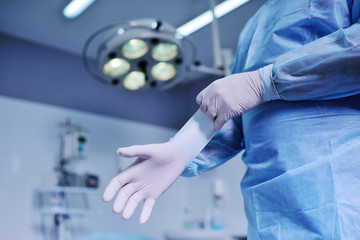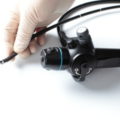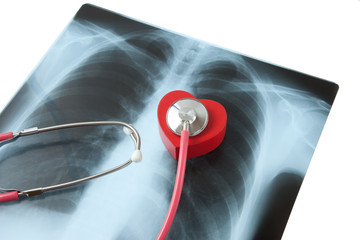看護師のみなさん、外国人患者さんが手術を受けることになったら英語で合併症予防について説明できますか?
【頻度の高い術後合併症】
- 肺疾患(無気肺・肺炎)
- 深部静脈血栓症
- 創部感染症
- せん妄
について、外国人患者さんに英語で説明できるようになりましょう!
術後合併症:肺疾患Pulmonary complication
無気肺の説明 Atelectasis
仰向けで横になっていることや術後の痛みによって深呼吸をすることが難しくなっています。
You become difficult to breath deeply due to the spine position and much pain after your operation.
空気が肺の底部まで行き届かなくなり、肺全体を使わずに呼吸をすることに慣れてきます。無気肺になるのです。
Air does not go though the bottom of your lung and you are used to breath without the function of all lung. As a result you become Atelectasis.
肺炎の原因 pneumonia
免疫力が落ちている患者がかかりやすいです。
特に、高齢者は誤嚥性肺炎に注意が必要です。
口腔内や痰の排出が上手くできずに誤嚥性肺炎を引き起こします。
The patient who reduced the immunity can become it easily.
Especially, elder people are careful of aspiration pneumonia.
It is required by contamination in your mouth and not removing the sputum.
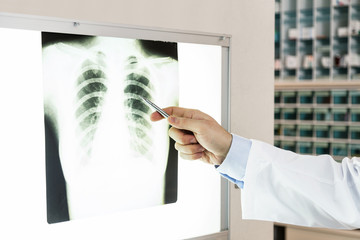
術後に無気肺・肺炎になる原因
- 喫煙習慣 the custom of smoking
- 浅い呼吸 breathing is shallow
- 長期臥床 lie down the bed for long time
- 痰の貯留 accumulation of sputum
喫煙歴が長い人、喫煙数の多い人は注意すべき合併症になります。
術後の肺疾患の予防 prevention
術後、深呼吸をすることや医師の許可内でできる限り早く体位を変更することを心がけましょう。(上半身を起こし、ベッドの端に座る、立ち上がるなど)
After your operation, you try to breath deeply and change the position as fast as possible within the doctor’a permission.(wake up the upper body, sit on the edge of the bed or stand up)
鎮痛剤の内服などで痛みをコントロールした上で、咳をするよう努め、痰を自己喀出することを心がけましょう。
Under the control of your pain by taking the painkiller, you try to cough and get rid of the sputum.
術後合併症:深部静脈血栓症Deep vein thrombosis
もし、長い間身体を動かさないと、血液の流れが悪くなり、血栓ができやすくなります。
これが深部静脈血栓症です。
静脈内にできた血栓が一瞬で肺へ飛び、時には呼吸が止まることがあります。
非常に怖い病気なのです。
If you do not move the body for the long time, the blood flow will become worse and provide blood clots easier. That is a thrombus.
When it created intravenously can also fly to the lungs at a moment, you have possibility of stop to breath.
It is a terrible disease.
深部静脈血栓症の予防 prevention
手術の前に密着する靴下(弾性ストッキング)を着用し、ベッド上でも足首を動かした方がよいです。
Before you have the operation, you should wear tight stocking and move your uncles on the bed.
手術の後は、医師の許可のもと、できる限り早く姿勢を変えたり立ちあがることを心がけましょう。
After the operation, you try to change the position or stand up as fast as possible within the doctor’s permission.
術後合併症:創部感染症 Wound infection
免疫力が落ちている患者さんはなりやすいです。
例えば、高齢者、がん患者や糖尿病の患者、ステロイド治療をしている人
The patients reducing immunity are careful of it.
For example, elder people, patients with cancer, diabetes or taking steroid.
創部感染症の予防 Prevention
手術の前にシャワーを浴び、特に手術の部位は清潔にしておきましょう。
Before you have the operation, you should take shower and clean up particular the surgical site.
私たちは毎日創部を確認します。そして、必要に応じて医師の指示の下、皮膚保護剤の交換もします。
We will check the wound every day and exchange the films under the doctor’s instruction if it is necessary.

術後合併症:せん妄Dipression
せん妄の原因 cause
- 環境変化 Changes in the environment
- 認知機能の低下 declining cognitive function
- 社会的刺激の低下 diminishing social stimulation
- 不安 anxiety
と言われており、高齢者になりやすいです。
This is tend to be elder patient.
術後せん妄の予防 Prevention
せん妄は一時的な症状ですので、本人・家族ともに心配しすぎないで下さい。
The depression is temporary symptom so don’t too worry for you and your family.
しかし、私たちは注意して対応する必要があります。
なぜなら無意識の内に、危険な行動をとる可能性があるからです。
例えば、点滴やドレーンを自分で引き抜く、ベッドから転落する、大声で叫ぶ、看護師を攻撃するなど。
However, we have to respond to you with caution because there is a possibility of taking dangerous action unconsciously.
For example, remove by yourself the drip or drain, fall down from your bed, shout out and attack a nurse.
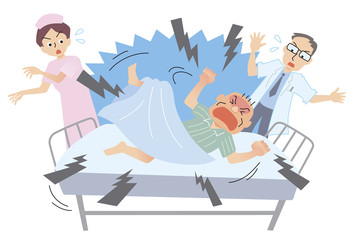
もし、安全が保てない場合は医師の判断をもとに鎮静剤を使用することがあります。
もちろん、家族の同意を得てです。
If we cannot keep the safety, we will use sedative for you based on the doctor’s instruction and your family’ s consent.
術後合併症の英語まとめ
手術の説明の際、医師から術後合併症のリスクの説明が必ずあります。
しかし、説明もさらっと済ませることが多く、患者自身も手術の話に集中しており合併症まで意識が向いていないことが多いのです。
実際に術後に吸引したり早期離床を促すのは看護師ですよね。その時になぜそのケアをする必要があるのかを説明しなけれべばいけず、結果、術後合併症の説明が必要になるのです。
外国人患者さんが増えている今、看護師も英会話が必要な時代になっています。
覚えられなくても、メモしておけば伝わるので英語で説明!頑張りましょう。
手術を受ける前に、まずは入院時の説明が必要ですよね。
外国人患者への入院時の英語説明もぜひ参考にしてください。

